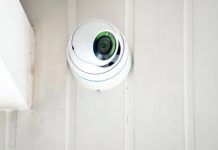Selfie-based biometric authentication is a highly effective safeguard against ID fraud, according to findings in Onfido’s 2022 Identity Fraud Report, which looked at fraud trends between October 1 of 2020 and October 1 of 2021. The study also found that sophisticated fraud attacks over the past year had increased by 57 percent compared to the previous year. Such identity fraud attacks feature fewer apparent errors, such as mismatched fonts, and entail the creation of ‘verified’ accounts using fraudulent documents. The sophistication of these attacks is indicative of organized crime behind the scenes, Onfido suggests.
Losses from identity theft are also on the rise. Onfido’s report indicates that they increased by 42 percent last year, reaching a sum of $712 billion. ID fraud overall increased by 41 percent in the same period. The entwined trends largely played out online as fraudsters have followed legitimate users into digital channels throughout the pandemic.
As for what all this increase in fraud looked like specifically, a lot of it involved the targeting of passports, which overtook National Identity Cards as the most frequent target of ID fraud. And much of it took place through e-commerce channels, with retail fraud seeing a 36 percent increase year over year.
Fortunately, a growing number of consumers have access to effective technological deterrents in the form of biometric identity verification. According to Onfido, the average document fraud rate over the first nine months of 2021 was 5.9 percent, whereas the fraud rate for selfie-based identification systems was only 1.53 percent. Video selfies, meanwhile, brought the fraud rate down to just 0.17 percent.
The findings attest to the merits of the selfie-based identity verification boom, with a growing number of organizations recognizing the benefits of using facial recognition to confirm end users’ identities remotely. For its part, Onfido has proven to be a leading provider of selfie onboarding solutions, having reported a 93 percent year over year increase in global revenues in its most recent quarterly update.








